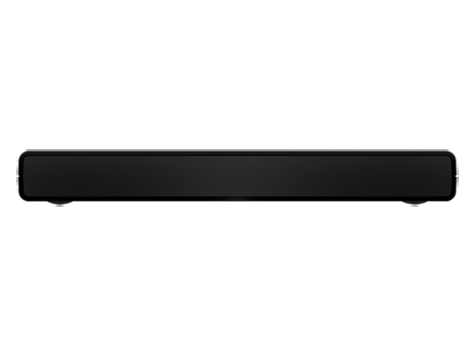USB Test and Measurement Class (USBTMC) Vendor-specific class support with generic In & Out endpoints. Can be used with MS OS 2.0 compatible descriptor to load winUSB driver without INF file. WebUSB with vendor-specific class; Host Stack. Most active development is on the Device stack. The Host stack is under rework and largely untested. The USB 2.0 driver stack is supported on Windows 8. Through event traces, the USB 3.0 driver stack provides a view into the fine-grained activity of the host controller and all devices connected to it. USB Hub3 Events.


| Home | Products | Teensy | Blog | Forum |
| You are here:TeensyHow-To TipsTroubleshoot |
Drivers Actions Usb 2.0 (hs) Winusb Device Download
| If your question isn't answered here, please post on the forum. PJRC does monitor the forumand every attempt is made to answer customer questions. You must post code or details needed to reproduce the problem.Please readthe posting guidelines.Just a few minutes to compose a detailed question usually results in much better help. The Teensy Quick Reference: Code Examples, Tips and Tricks list has a list useful resources and solutions for many common projects. The Most Common Problems#1: LED Blinks But No USB Communication: Many cell phones are sold withcharging-only cables. They have only 2 wires for power, but are missingthe 2 data wires. Try another USB cable, ideally one known to work for USB.#2: No COM Port or Serial Device Seen: Teensy uses HID protocol for uploading,not serial. Brand new Teensy boards are shipped with the LED blink example compiledto appear as RawHID. You must program Teensy at least once from Arduino. The COMport (Windows) or Serial Device (Mac, Linux) appears only after Teensy beginsrunning your program. Regular Arduino boards are always serial. Teensy uses HIDand supports many protocols. To use serial, make sure the Tools > USB Type menuis set to 'Serial', and understand Teensy only becomes a serial device when it runsyour program built with this setting. #3: Dead (usually overheating) Main Chip: More than 4 volts applied to the3.3V power pin instantly kills a Teensy LC or 3.2. Be extremely careful if connectingcircuits to Teensy using both VIN(5V) & 3.3V pins, or when using any external powersupply. Loose wires between Teensy and other electonics accidentally touching arethe most common way Teensy fails. Just a few extra minutes to cover exposed leadsand mechanically secure loose wires, especially if they can easily unplug from asolderless breadboard, can save you from an unpleasant and costly 'learning experience'. Unreliable CommunicationSome USB hubs have trouble handling the rapidsequence of connect/disconnect events when programming Teensy.Most hubs workfine, but the few that do not can cause very strange problems.If you experience trouble, always try connecting Teensy directly with a qualityUSB cable.Teensy 3.0 Not Recognized by Teensy LoaderTeensy Loader 1.07 is the first version to support Teensy 3.0.You can check the version using Help > About.Version 1.07 is part of theTeensyduino installer. Itautomatically runs when you click Upload or Verify in Arduino.Brand New Teensy Not RecognizedWhen a brand new Teensy has never been recognized by Teensy Loader,follow these steps.
Teensy Not Recognized by Teensy LoaderA previously working board may seem to be dead, but the problem may simply be codeon your Teensy which confuses your PC's USB port.
On Windows systems, 'strange' problems are occasionally reported, whereWindows will not detect new devices. It does not seem to be unique toTeensy. Creating a new user account sometimes solves the problem. Pluggingthe cable into different USB ports can also help. Rebooting is always a goodidea. The best approach is to try on a Mac or Linux machine, or a differentWindows machine. No Serial Port While ProgrammingThis is normal. Teensy is NOT natively a serial device.Arduino boards appear as a serial device for all programmingand communication. Arduino remains connected as a serial device whileit reboots. Teensy is a native USB device. Experience troubleshootingArduino does not apply to Teensy! During programming, Teensy appears as a HID device.When Teensy reboots, electrically your computer sees Teensy disconnect, asif the cable were physically unplugged. When Teensy begins running yourprogram, the USB is disconnected. The fast and slow LED blink examples do not enable the USB port. When programs do use USB, type of device Teensy becomes depends on the codeyou have loaded. Your computer will see a new USB device connect when yourprogram begin using the USB port.In Arduino, the device type is controlled by the Tools > USB Type menu.In C language, the USB code you use determine the type of device. The hid_listenprogram only responds to specific C programs. While troubleshooting, you mustlook for the type of device which your program implements. TODO: list of C code and Teensyduino device types, VID/PID numbers for each. Pushbutton Does Not Reset ApplicationThe pushbutton lets you to manually putTeensy into programming mode. With Arduino, this happens automaticallywhen you click Upload. But if your code disables the USB port, or disables interrupts,or enters a deep sleep mode which stop the CPU, Teensy can not respond to theUSB-based reboot request.Every Teensy is made with a physical pushbutton to allow recovery from anot-responding program. The pushbutton does NOT reset Teensy to restart your application. However, ifTeensy is connected to your computer, andTeensy Loader is running and configured for automatic mode (the default whenused with Arduino), pressing the button will enter programming mode.Teensy Loader will quickly reprogram and restart your Teensy. This restart ofyour application is due to Teensy Loader's 'auto' mode, not only the pushbutton. LED Blinks Green or BlueYou have a counterfeit board. PJRC has never made any Teensy with a greenor blue LED. If you purchased using Ebay and Paypal, we recommend you immediatelybegin a dispute on Paypal's website. Do not bother contacting the seller. Theyhave already scammed many other people with defective boards, but they simply donot care. A dispute on Paypal is the only way you will recover your money. Thesooner you file the dispute, the better your odds of receiving a refund. Werecommend waiting to leave negative feedback until after Paypal returns your money.Large Programs Mysteriously CrashOn Teensy 2.0, the compiler places string constants in RAM. If you have have many, RAMcan run out quickly. In Arduino, you can use F() to cause strings usedwith print() to avoid using RAM.In C language, usually PSTR() is used, and special functions which accessflash memory must be called. Often they have a '_P' suffix. Large data tables or arrays can also cause trouble. If data is constant,PROGMEM and pgm_read_byte() can be used. See theavr-libc manualfor details. Teensy LC, 3.0, 3.1 do not have this problem. Variables defined with 'const'are placed only in flash memory, but can be accessed normally. Only the older8 bit AVR-based boards require these special steps to prevent strings andread-only variables from consuming limited RAM. Windows: Serial Driver Installed But Not UsedOn Windows, even if the serial driver installer hasrun correctly, sometimes Windows will retain old information in its registry andfail to load the driver. The Device Manager will show 'USB Serial' with an error,instead of 'USB Serial (Communication Class, Abstract Control Model)' with a COMport number assigned.These actions usually can cause Windows to re-detect the device and begin usingthe correct driver.
If there is no 'USB Serial' at all, please rememober Teensy only becomes a Serial device when programmed to do so. See 'No Serial Port While Programming' above. Windows 7: Unknown Device (Code 43)Windows 'Code 43' is a mystery. Other devices, even Apple iPod, haveexperienced this problem. The solution seem to be becompletelypowering down, and if a latop, remove the battery for a few minutes. Thissame solution has beenreportedmultiple timeswith success.This code 43 error is a mystery. It might be related to laptops enteringsuspend mode? If you have any insight, please contact us! Pieter Rautenbach found a case where programming the wrong HEX file(compiled for a different chip) causes error 43. Windows: Teensy Loader Window Does Not AppearOn Windows, if multiple monitors are used and then only a single monitoris later used (eg, a laptop used at a docking station), the Teensy Loadermay attempt to appear on the missing monitor. The Teensy Loader appearsin the Windows Task Bar, but not on the screen.
Additional info from Gilbert Hersschens: 'Since you can't see the missing window, you won't know for sure if it's visible or hidden. But you can see this in the context menu. When the window is shown on the missing display, the menu item 'Move' will be active and the item 'Restore' will be greyed out. When it's hidden, it will be just the opposite. You can only move a window in its visible state.To hide or unhide a window, you can click on the icon in the taskbar to toggle its state or use the corresponding menu items in the context menu. Linux: Gentoo & Arch AVR ToolchainThe AVR toolchains provided by Gentoo and Arch are broken. Theycompile .hex files which simply do not work!Starting with version 1.0.1, Arduino downloading from www.arduino.cchas a known-good toolchain.If running avr-gcc with a makefile, download Arduino 1.0.1and set your $PATH to access the toolchain inarduino-1.0.1/hardware/tools/avr/bin directory. Linux: Long Delay Before USB Serial DetectedOn some Linux systems, USB Serial is detected very slowly. The kerneldetects the device quickly (usually seen with 'tail -f /var/log/messages'),but the device files do not appear for a very long time.Edit '/lib/udev/rules.d/77-nm-probe-modem-capabilities.rules',adding this line: Linux: Many Duplicate Device Names with Ubuntu 9.10On Ubuntu 9.10 (and maybe other systems), when using a serial device type,the kernel assigns a new number each time, /dev/ttyACM0, /dev/ttyACM1, /dev/ttyACM2, etc.This is caused by the Gnome Modem Manager, which holds the port in (as far as the kerel isconcerned) use even after you have reset the Teensy and the port no longer exists.The simplest solution is to uninstall Modem Manager, and restart the network manageror simply reboot. You could also try deleting /usr/lib/ModemManager/libmm-plugin-generic.so andof course reboot. This might leave Modem Manager able to work with most modems,but not interfere with Teensy. Modem Manager's troublesome probing and inability to configure exclusionsfor specific device is a known bug.Hopefully it will be fixed in future releases. Windows: Teensyuino Installer Unable To WritePlease temporarily disable any anti-virus software. Many 'heuristic' anti-virusprograms do not like one program writting to another. The Teensyduino installerneeds to modify many files inside the Arduino software. 'Windows Essential Security'has been reported to cause trouble. |
